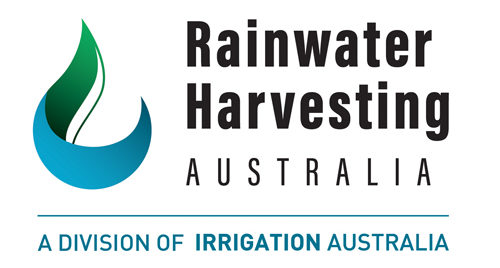Little Stringybark Creek, located 37 km from Melbourne, has an urban catchment of approximately 300 ha at its headwaters and a total catchment of about 800 ha. Development in the catchment is a mix of urban and semi-rural. The creek is the focus of a project that is providing an understanding of how urban infrastructure and design can affect natural waterways.
Researchers from the University of Melbourne (Walsh et al 2012) have identified that if runoff from impervious areas is connected via gutters, pipes and drains directly to a local waterway, it is highly destructive of the biology and ecology of that waterway. Streams are extremely sensitive to even a tiny proportion (0.5 per cent) of directly connected impervious areas in their catchment. Conversely, if impervious areas are not connected, draining to bushland or gardens or the runoff is being used for household or landscape purposes, the impact is far less.
Conventional practice has been to manage the level of contaminants in stormwater. This project shows there is a much stronger link between the area of directly connected impervious surfaces in a catchment and waterway health.
The research has found that if impervious area runoff can be controlled, using rainwater tanks, raingardens, leaky tanks and infiltration trenches, then degraded waterways may be able to recover at least some of their biodiversity and ecological function.
What is not immediately clear are the implications of these findings for irrigation from rainwater. On one hand, capturing runoff and using it for irrigation has multiple benefits; it increases the amount of groundwater flow to replicate historical baseflow for local waterways, it removes stormwater volume from the system and it creates new green spaces for cooling, amenity and even food.
On the other hand, irrigation is not always a reliable use of collected water, e.g. in winter, and rainwater tanks should be connected to internal uses such as toilet flushing and hot water systems. In summer there may not be enough rainfall for irrigation, requiring relatively drought-tolerant planting.
Symptomatic of a larger issue
Little Stringybark Creek also represents a more widespread urban problem. Infrastructure solutions that only consider one aspect of water management, such as draining water as quickly as possible from streets and buildings, can create unintended consequences in other parts of the urban system. A systems approach is needed for water cycle management that includes stormwater management in urban areas.
Restoration program
A restoration program for the upper part of the Little Stringybark Creek was initiated in 2008 based on evidence showing that stormwater runoff causes severe ecological degradation in the following ways:
- much more run-off is delivered more often, causing erosion and channel enlargement and destroying physical habitat
- unfiltered runoff is typically of poor quality with high levels of nutrients, sediment and toxicants
- hard surfaces prevent infiltration, potentially starving streams of vital dry weather flows (baseflow).
In the process the researchers found that while they were Installing 200 rainwater tanks and 100 raingardens, much of the benefit they were achieving was eclipsed by new urban development in the catchment increasing the directly connected impervious areas they were trying to reduce.
As a result, the local council has decided that not only does it need to change stormwater management in the existing urban areas of the creek, it also needs to control the impact of new development. Yarra Ranges Council has chosen to do this through an Environmental Significance Overlay and deemed-to-comply controls that encourage rainwater harvesting, raingardens and infiltration trenches to address the impact of impervious areas such as carports, new buildings and extensions of over 10 m2.
The program is the first ever attempt to restore creek health by treating stormwater across an entire catchment. Protecting the natural flow regime of the Little Stringybark Creek and ensuring good water quality are critical to maintaining the biodiversity and ecological processes of this creek, as well as downstream waterways including Port Phillip Bay. Further development, especially drainage from impervious surfaces (roofs, roads and paving), is a threat to the health of the creek.
The objective of the program is to return the ecological function and health of the Little Stringybark Creek to a level consistent with that of a natural stream by encouraging stormwater run-off and water quality entering the creek from new development to achieve:
- natural frequency of surface run-off
- natural volumes of run-off
- natural infiltration rates
- natural concentrations of pollutants.
Communities value natural amenity
There is considerable research showing that local communities value the ecology and amenity of their local waterways and are willing to pay to protect it. If the research is correct and the practice shows significant restoration of local waterways, we need to see more catchment- and city-wide application of these principles.
